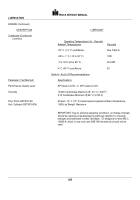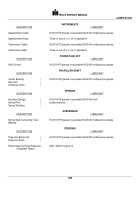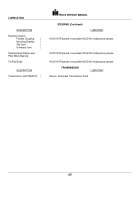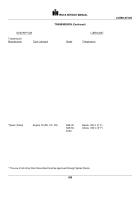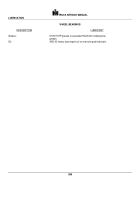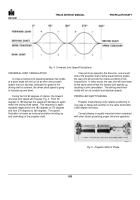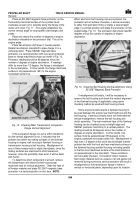TM-5-3805-254-14-P-2 - Page 599 of 894
PROPELLER SHAFT
TRUCK SERVICE MANUAL
General
shaft speeds.
Where the flange also maintains the
adjustment on the rear axle pinion bearings or propeller
shaft center bearings, this adjustment is destroyed
because of lack of torque on the nut.
When a
companion flange is removed from a transmission,
center bearing or rear axle, the flange and shaft should
be marked so that the flange can be reinstalled in the
same position on the shaft.
Be careful during the
removal or replacement of companion flanges, as rough
handling such as hammering on the trunnion mounting
may bend or distort the flange.
Center Bearing:
Tighten the propeller shaft center
bearing mounting bolts.
Should the center bearing
insulator be deteriorated or oil soaked, it should be
replaced.
Loose mounting bolts or an oil-soaked or
deteriorated insulator can cause excessive vibration.
See "
PROPELLER SHAFT
, " Section A, CTS-2046.
Engine and Transmission Mountings:
Tighten the engine
and transmission mounting bolts.
If the mountings are
oil soaked or deteriorated, they should be replaced.
Loose mounting bolts or oil-soaked or deteriorated
mountings can cause excessive vibration.
Clutch and Flywheel:
The light side of the flywheel is
stamped with a letter "L" and should be lined up with the
arrow or inspection mark (usually a white dab of paint)
stamped on the heavy side of the clutch.
(If no arrow is
stamped on the clutch, it can be assembled to the
flywheel in any position.
) If these markings are not lined
up, excessive vibration can result.
DRIVE LINE ARRANGEMENTS
There are two types of drive line arrangements that
will satisfactorily transmit power to the driving wheels:
the parallel joint type and the nonparallel or "broken
back" type.
Fig. 2.
Parallel Joint Type Drive Line
In the parallel joint type all companion flanges and/or
yokes in the complete drive line are parallel to each other
with the working angles of the joints ("A" and "B", Fig. 2)
of a given shaft being equal and opposite.
For in
stance, if the transmission mainshaft center line at the
rear is down 5 degrees from a true horizontal plane, the
center line at the front of the auxiliary mainshaft or rear
axle pinion shaft must be 5 degrees up.
With the nonparallel or "broken back" type
installation the working angles of the joints ("A" and "B",
Fig. 3) of a given shaft are equal; however, the
companion flanges and/or yokes are not parallel.
Example:
The flange or yoke of the main transmission is
3 degrees from a true vertical with the rear axle pinion
flange or yoke at 12 degrees.
The working angles of the
universal joints of this propeller shaft are equal and the
shaft will run smoothly, Fig. 3.
Fig. 3.
"Broken Back" Type Drive Line
When the propeller shaft angle is determined in the
nonparallel type installation, the rear axle is rotated about
the axle shaft axis until the pinion shaft and transmission
mainshaft extended center lines intersect exactly midway
between the universal joints centers ("’D" and "E", Fig.
3).
It can be readily seen that the pinion and mainshaft
center lines may be quite different with respect to a true
horizontal; however, the joint working angles ("A" and
"B", Fig. 3) are identical.
UNIVERSAL JOINT WORKING ANGLES
The major prerequisite for obtaining troublefree and
long-lasting operation of a drive line is consideration of
the universal joint working angles.
Any given universal joint has a maximum angle at
which it will still transmit power smoothly.
This angle
depends on the joint size and design.
To exceed the
maximum recommended working angle is to greatly
shorten or immediately destroy the joint service life.
The universal joint working angles of both joints of a
given propeller shaft should operate at the same angle
with not more than one-half degree of variation.
If the working angles of a given propeller shaft are
not equal, joint cancellation will not occur, resulting in
destruction of the joint.
592
Back to Top




